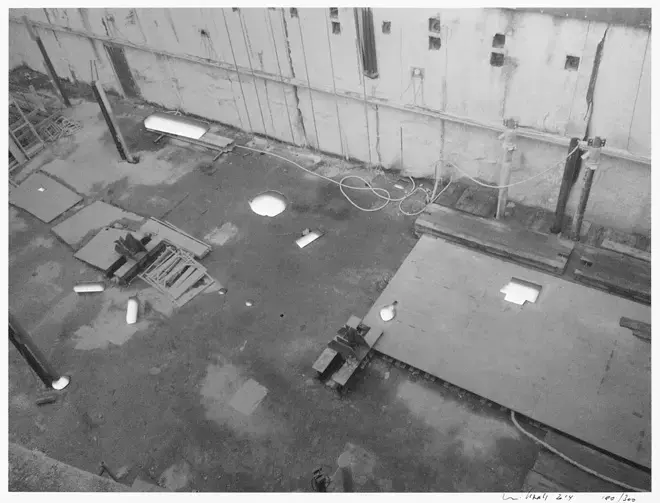
Cologne, 2013–2015
„Nullify/Nietenblatt“
Over a time period of two years a loose series of collaborations arose in cooperation with the ArchivKomplex initiative, which deal with the collapse of the Cologne Historical Archive in March 2010 and its consequences. The projects, artistic interventions, exhibitions, and events were realized in diverse locations in Cologne with, among others, students at the Academy of Media Arts (KHM) in Cologne. In fall 2014 in collaboration with the artist collective KJUBH a “Nietenblatt,” a special artist’s edition, resulted which shows the structural circumstances of the site of the collapse. (JO)

Cologne, 2013
„KMB – Art and Museum Library“ Rathausplatz
Since 2012 there have been substantial protests against the possible closure of the Art and Museum Library in Cologne and against the decentralized housing of the books. The voices of protest were accompanied by organized public demonstrations, for example at Rathausplatz in summer 2013. With red books as their symbol, proponents of the preservation of the library publicly showed their support for the cause. As a “human threshold” Mischa Kuball lay silently for an hour in front of the entrance to the city hall. (JO)
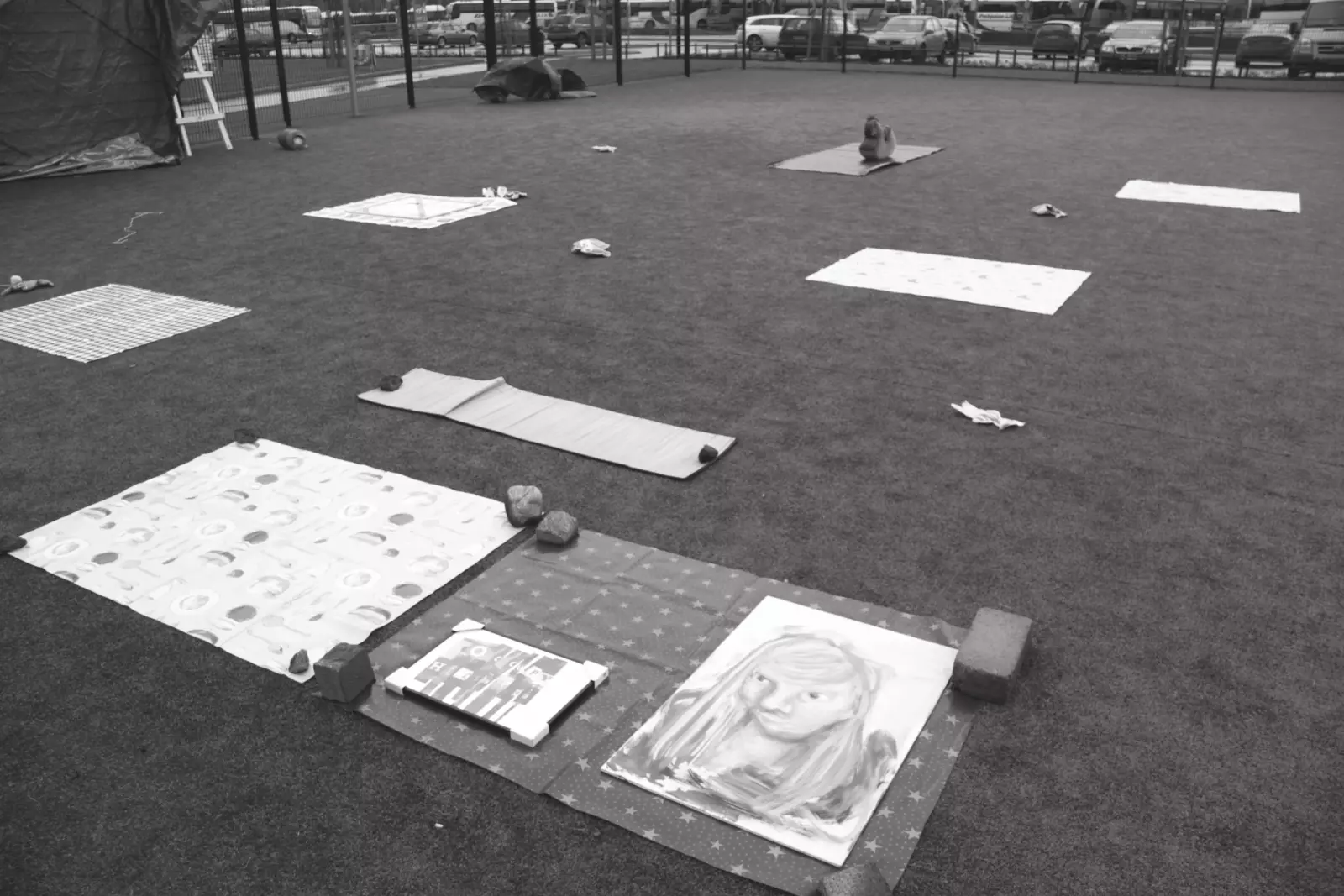
Helsinki, 2011
„Occupy Helsinki“, with students from the Helsinki Academy of Fine Arts
A workshop developed with students from the Helsinki Academy of Fine Arts specifically dealt with the question of political influence from the artist’s perspective. In a critical convergence contact was soon made with globalization opponents “Occupy Helsinki,” who were camped in front of a publishing house in the inner city. An auction of the students’ artworks was collaboratively organized, taking place outdoors in an enclosed sports field. One hundred percent of the proceeds went to “Occupy Helsinki.” Several art students remained active in the movement after the workshop ended. (JO)

Metz, 2010
„entrée public“, Centre Pompidou-Metz
As part of a cultural “franchising project,” a former Roman amphitheater in Metz near the train station became a new “branch” of the Centre Pompidou in Paris. In preparation of the inauguration projects, including among others the exhibition “Chefs d’oeuvre?” with 700 masterworks out of the Paris collection, temporary works in urban space related to the Centre Pompidou-Metz (CPM) were to be realized. Mischa Kuball installed a 150-meterlong ramp which connected the train station and the CPM staging a VIP section open to everyone with a red carpet and spotlights. (JO)
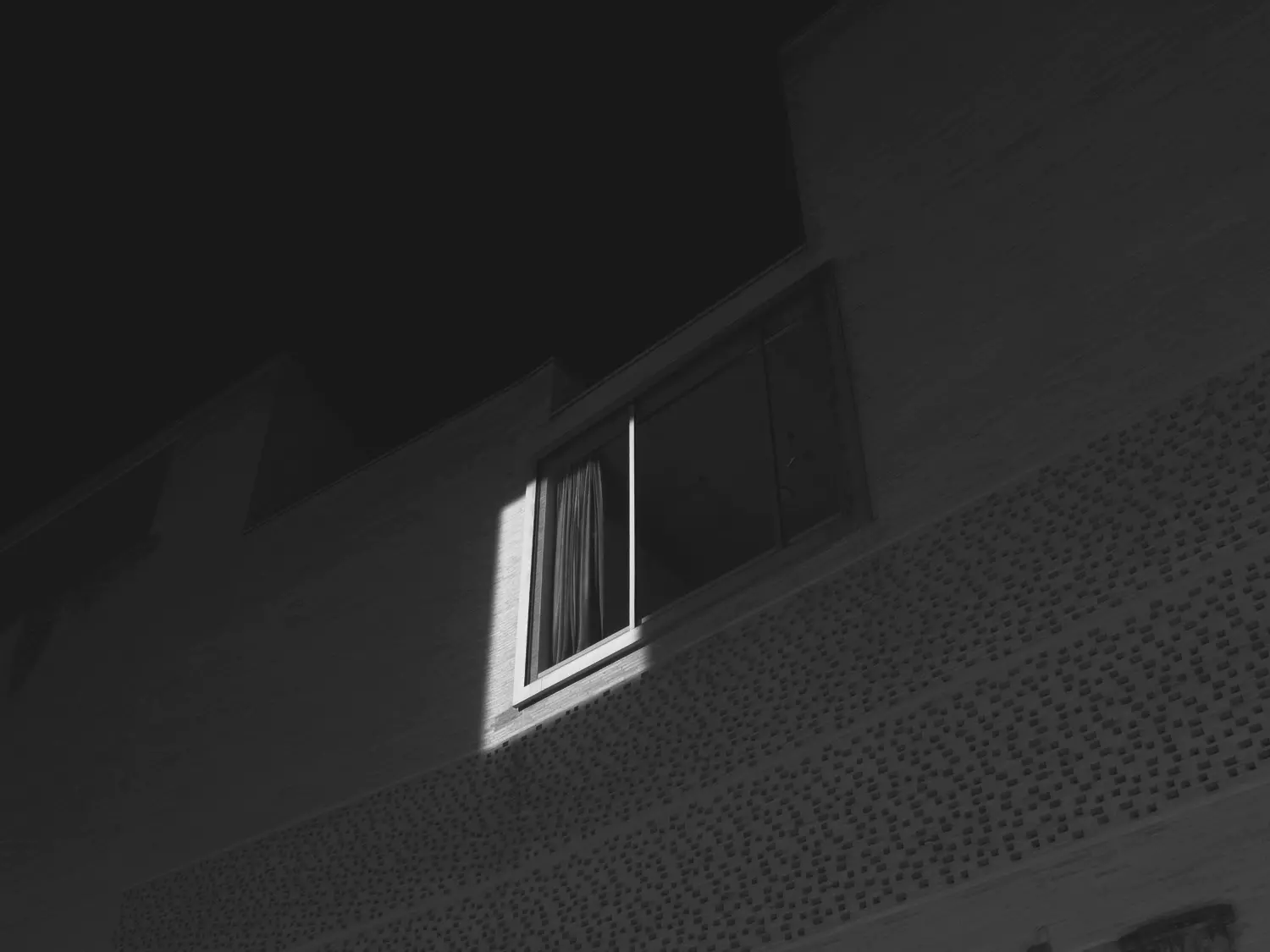
Cologne, 2010
„Kolumba_shift“, Kolumba
The public reach of the Cologne Diocesan Museum, Kolumba, is shaped by its unique architecture by Peter Zumthor, which connects old and new construction, and through thematic temporary exhibitions. Room 10 of the museum is reserved for monographic projects. At the new year a 7 by 7 meter white field of light modeled after the window in the space slowly shifted across the external façade, thus making visible the relationship between architecture, institution, and city. (JO)
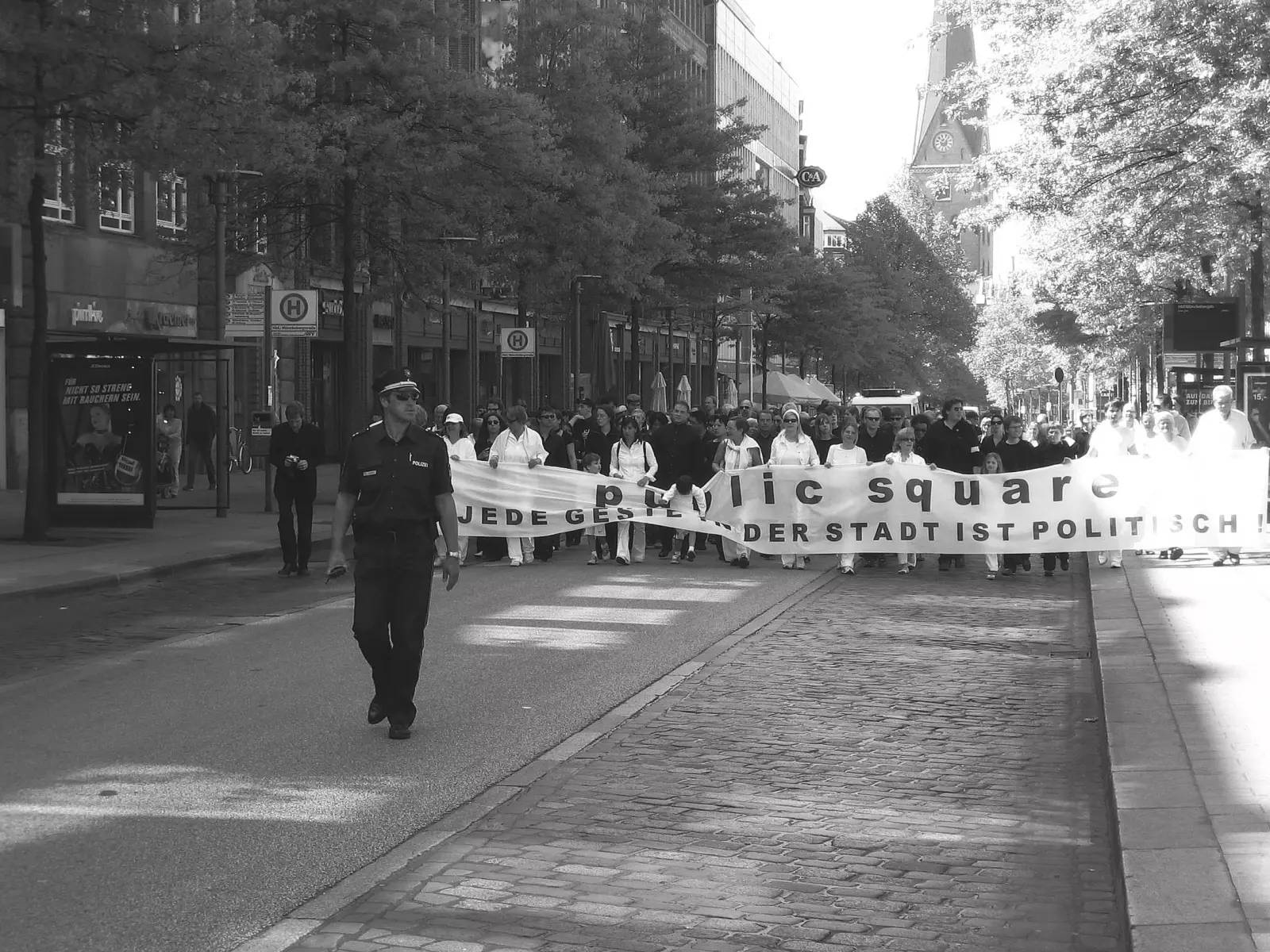
Hamburg, 2007
„public square“, Kunsthalle Hamburg
As part of an exhibition on Kazimir Malevich and contemporary artists in the Kunsthalle Hamburg, Mischa Kuball mobilized a public rally according to the political maxim of Constructivism of the 1910s and ’20s. Against the background that every German citizen has the right to organize a demonstration escorted and protected by the police, Kuball assembled about 450 people in front of the Kunsthalle, clothed in black or white to continue for 75 minutes through the inner city of Hamburg as a “black square on a white ground.” Each participant received a project-related edition. (JO)
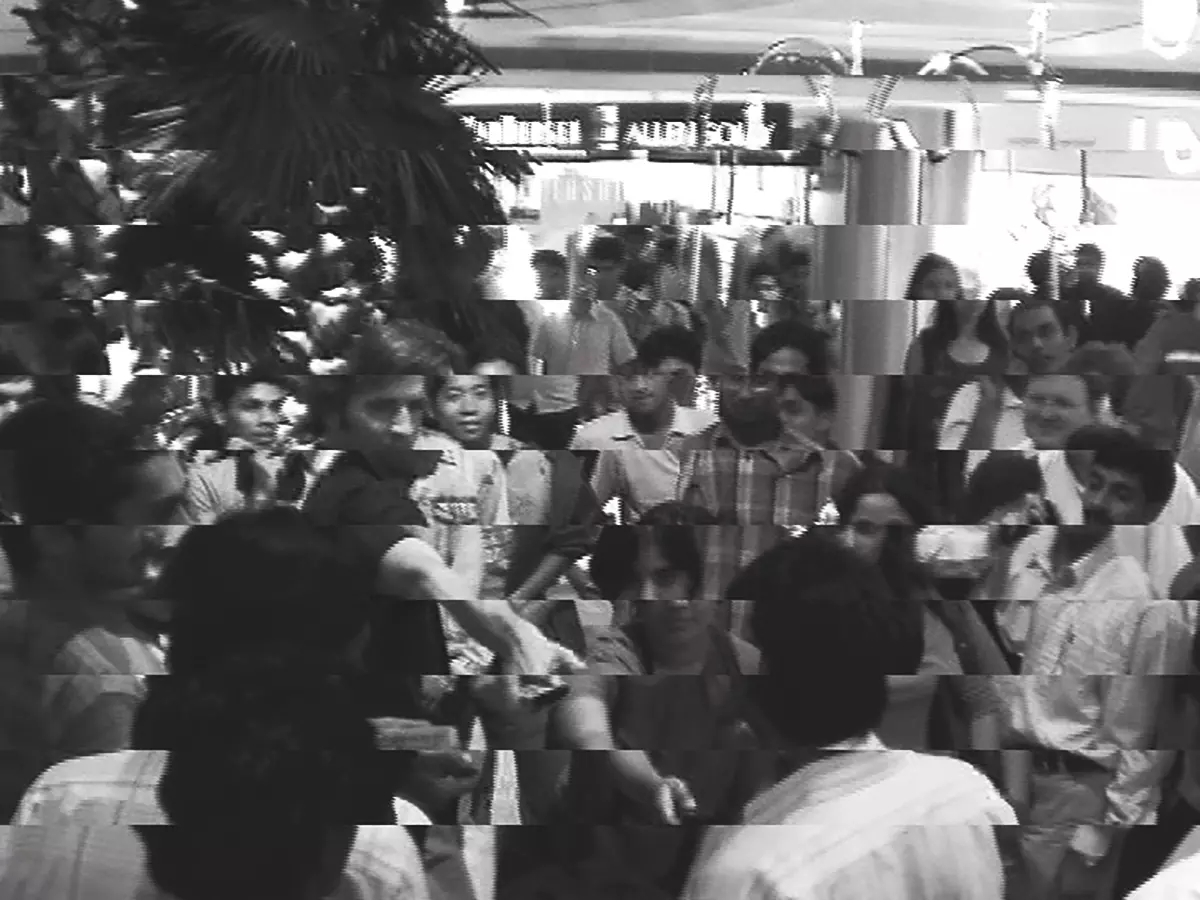
Bangalore, 2006
„public workshop“, Goethe-Institut, public space
On the invitation of the Goethe-Institut Max Mueller Bhavan Bangalore, Kuball developed a workshop to explore the possibilities of the public spaces of Bangalore through performative interventions. In a period of four days he staged “urban scenes” in street traffic with 12 to 15 participants, which sometimes jammed traffic or he integrated random street scenes into the action. Readings on related themes were also held at the Art Academy in Bangalore. (JO)
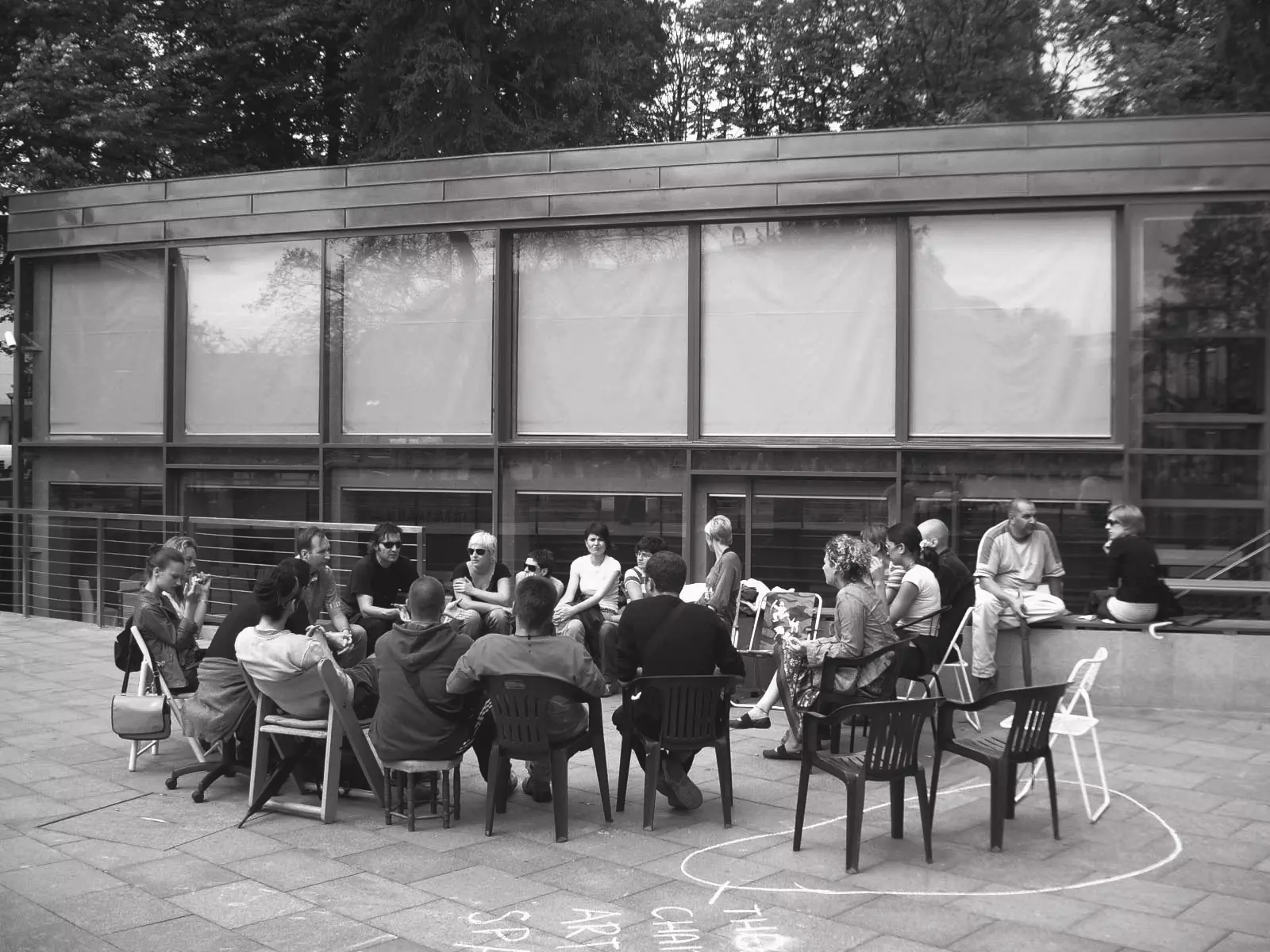
Banja Luka, 2006
„public workshop“, PROTOK, public space
Invited by the artist initiative PROTOK a series of spontaneous actions rooted in the everyday were created in public space in Banja Luka in Bosnia and Herzegovina. Silent public reading of literature from personal collections or ad hoc chess matches were accompanied by a loose series of lectures and discussions, among others, with Dunja Blasewicz and Zoran Eric. Two empty chairs represented the absence of two Albanian participants who could not obtain visas and were detained for days at the border between Albania and Montenegro. (JO)
Karlsruhe, 2005
„public entrance“, ZKM Karlsruhe
The ZKM | Museum for Contemporary Art and the ZKM | Media Museum organized an extensive exhibition of light art in Karlsruhe. Kuball developed a light show for the entrance of the exhibition with an effect that oscillated between visually appealing and blinding to the viewer. Visitors directly encountered the medium of light on the 150-meter-long red carpet as they approached the exhibition hall. When leaving the exhibition, however, their bodies cast long shadows. (JO)
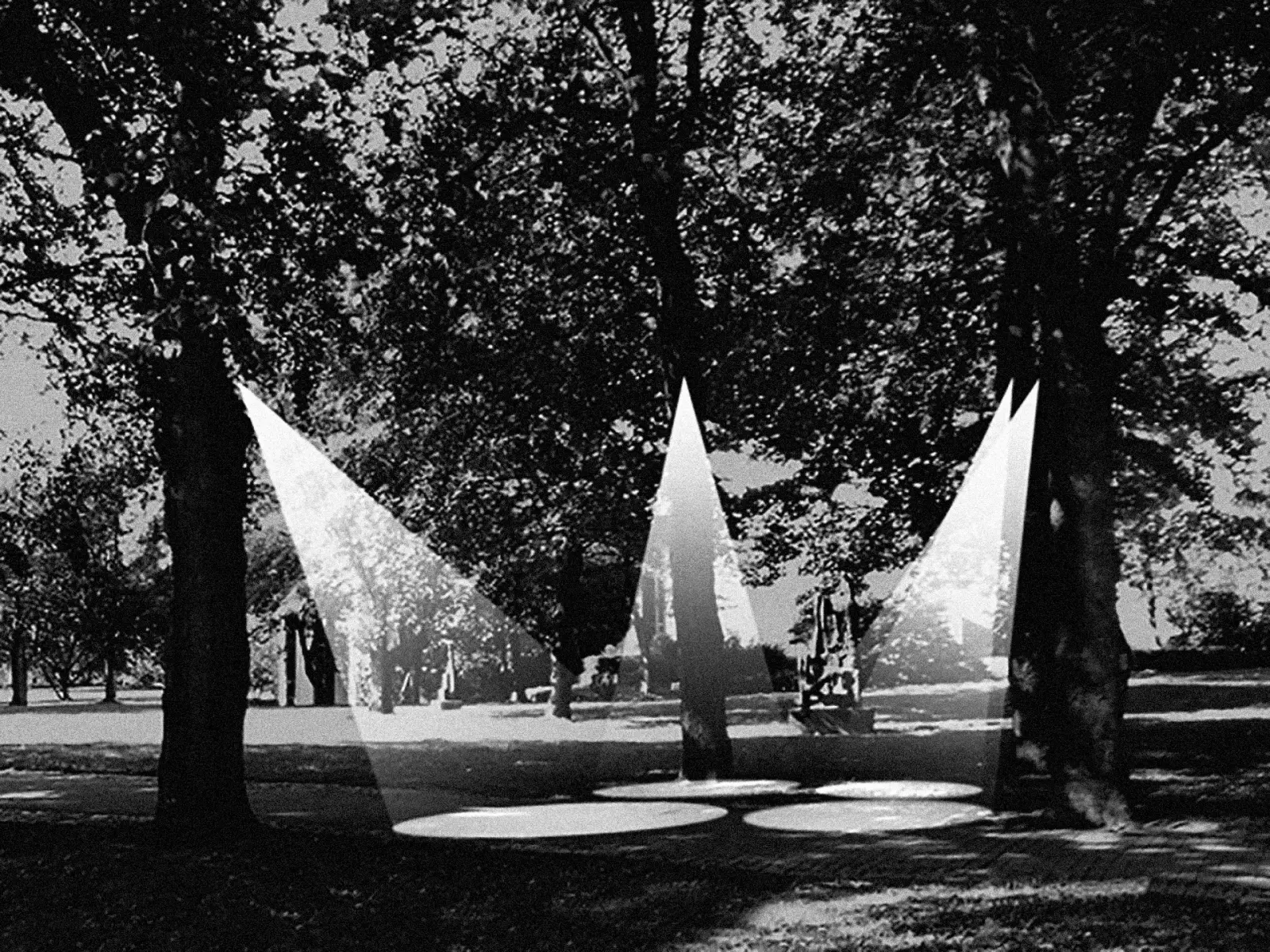
Duisburg, 2004
„KantParkStage“, Lehmbruck Museum, Immanuel-Kant-Park
Among the trees in the Kantpark in Duisburg the artists Kunsu Shim, Gerhard Stäbler, and Mischa Kuball realized an interactive multimedia installation that could be used as a temporary stage at night. Attracted by the soundsmadeby passersby, four sensorcontrolled spotlights were directed towards them, illuminating them for a moment and taking them by surprise. The collaboration took place in cooperation with the Lehmbruck Museum in in Duisburg. (JO)
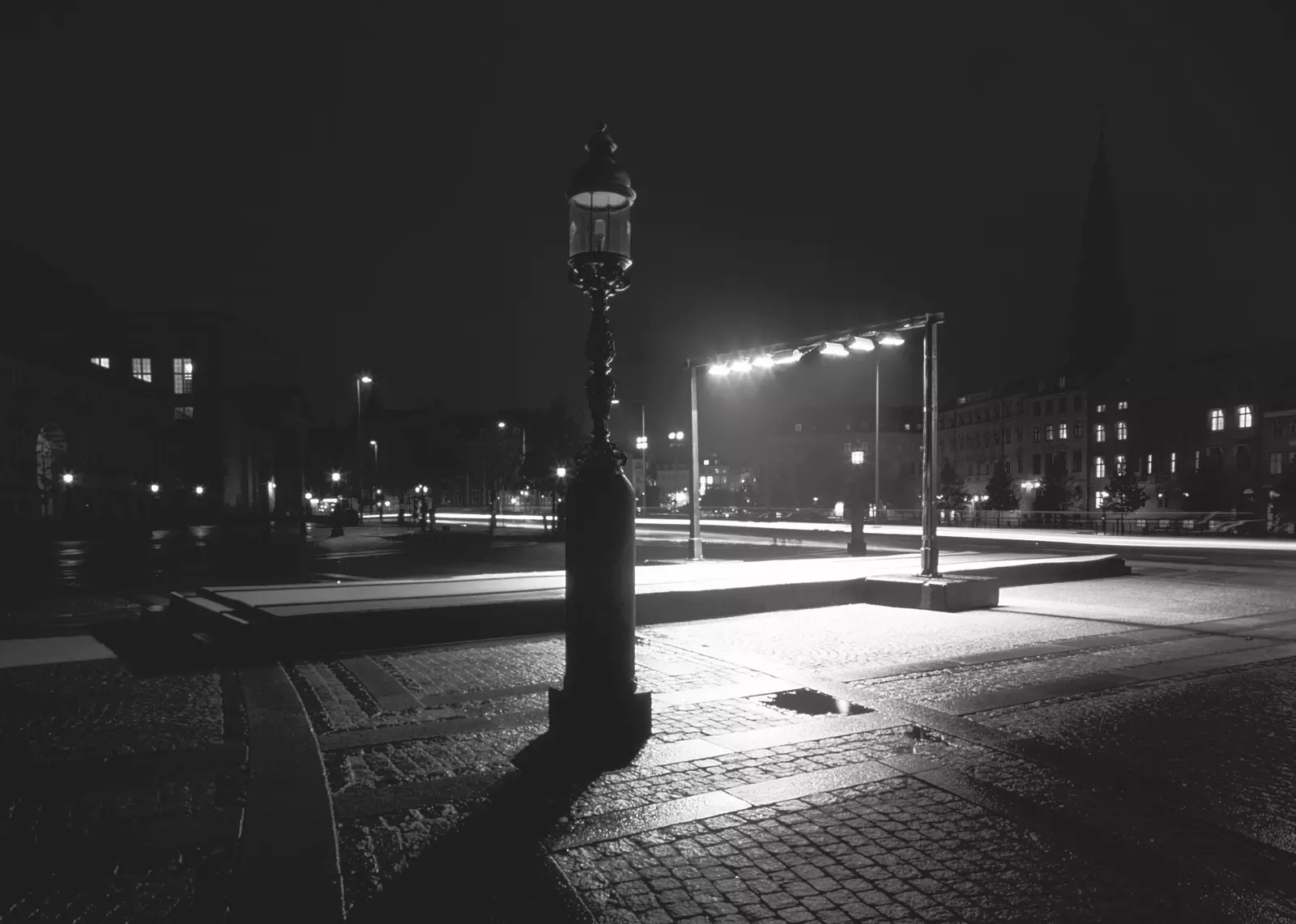
Copenhagen, 2001
„public katharsis“, public space
Copenhagen was the capital of the EU presidency in 2001 and was thus central to the discussions of the European Union and its so-called eastern expansion. A public illuminated ramp connected the sidewalk with the entrance to the royal palace for a short time and democratically lifted up the barrier between these two “publics.” (JO)
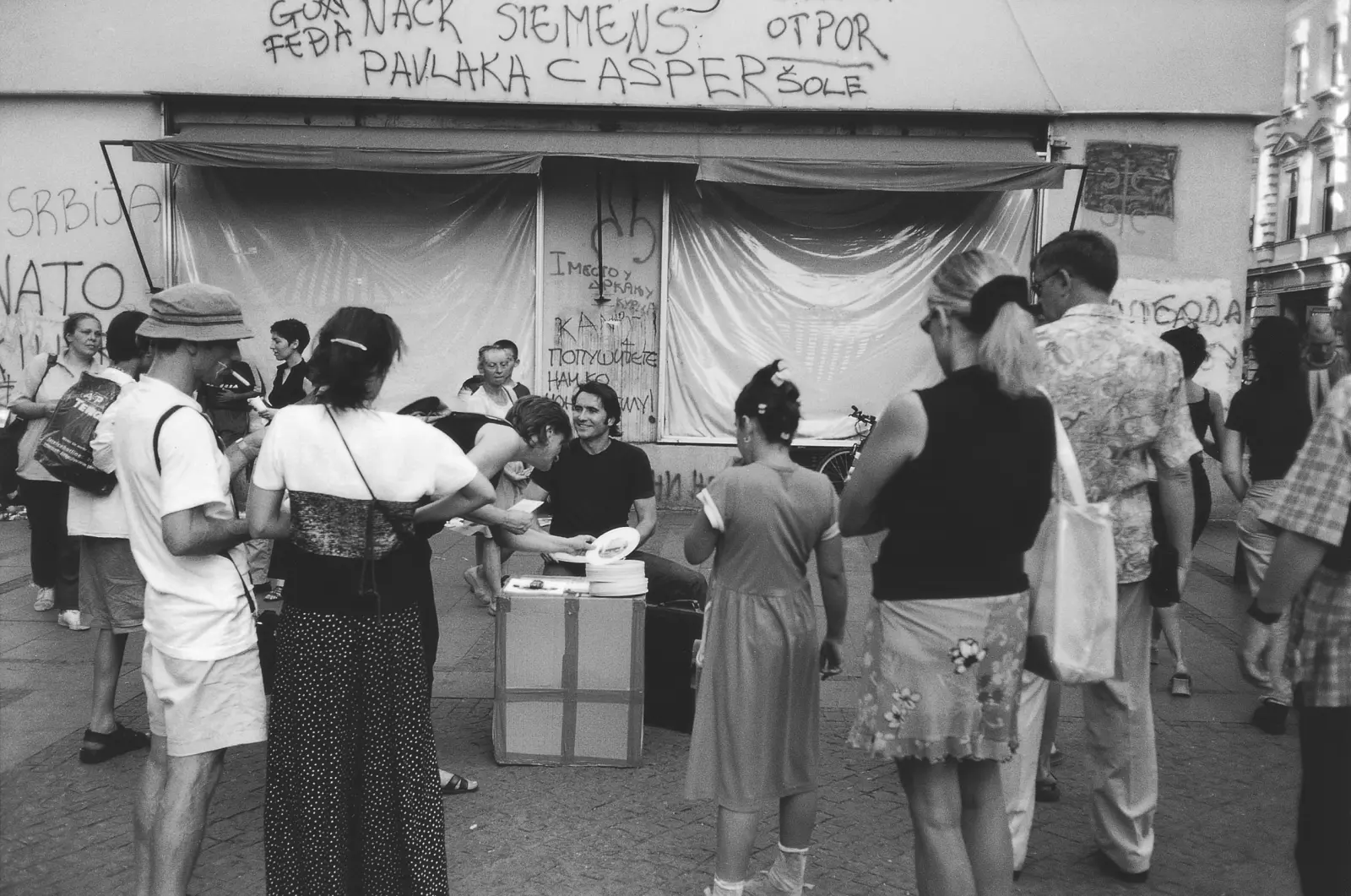
Belgrad/Belgrade, 2001
„Souvenir for Belgrade/ Dysfunctional Places/ Displaced Functionalities“, public space
Anti-American and anti-capitalistic graffiti mingle on the building of the former American Cultural Center in Belgrade with the traces of the Balkan War of 1992/93. In this ambiguous situation Kuball placed a five-minute intervention. Two-hundred souvenir plates (with a Serbo-Croat leaflet) were distributed to passersby. They were manufactured in Belgrade in the style of plastic plates that were originally decorated with American comic icons. (JO)
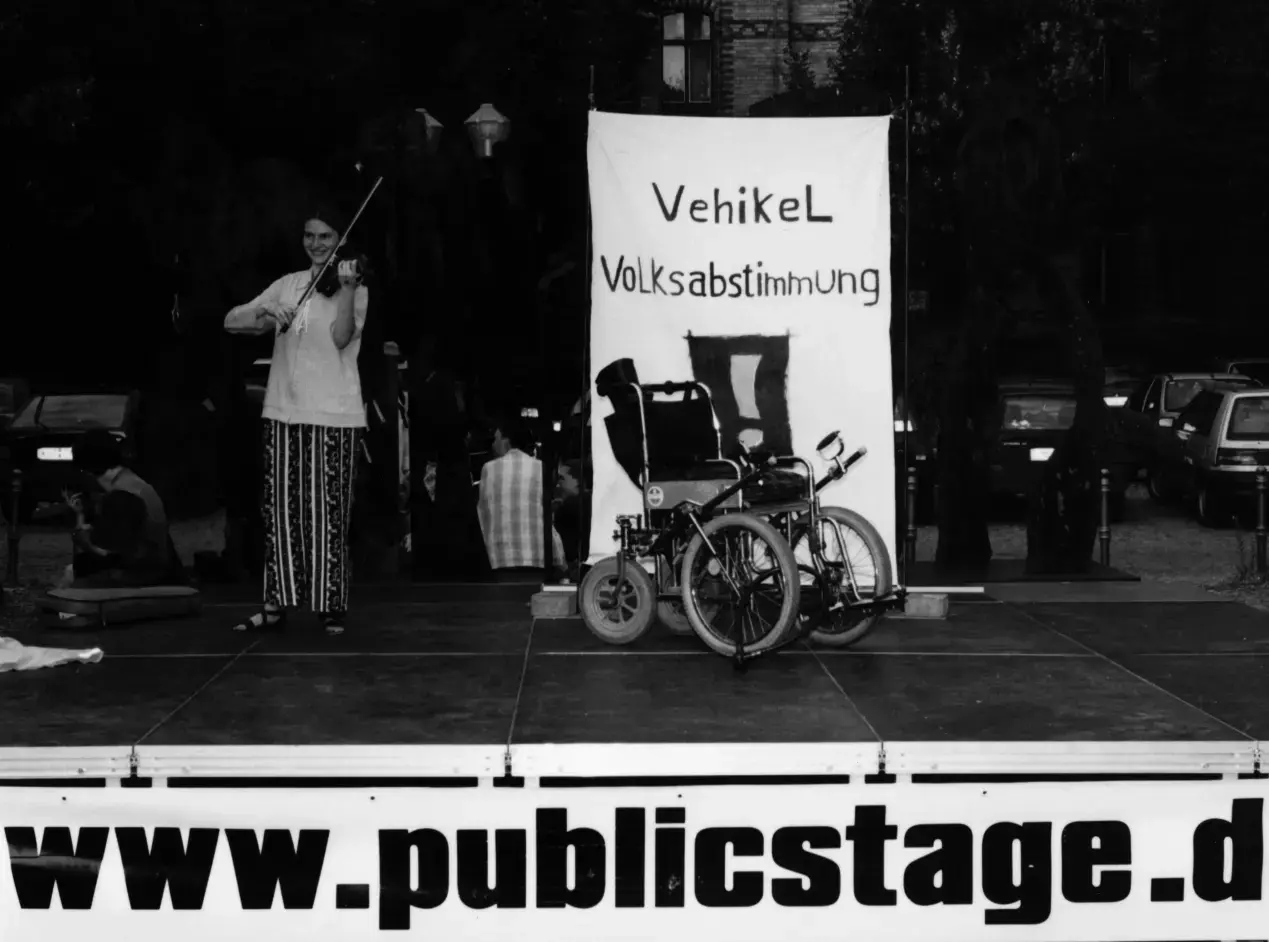
Halle/Saale, 2000
„public stage“, Staatliche Galerie Moritzburg, public space
Invited to open up the castle-like museum building out to the cityscape, the artist responded with a public stage in front of the museum that was accessible and “performable” to everyone for 14 days. All activities were documented and summarized in a small brochure. A webcam broadcast the happenings on the Internet. Moments from the shows and self-representations were ephemeral aspects of an understanding of the work. (JO)
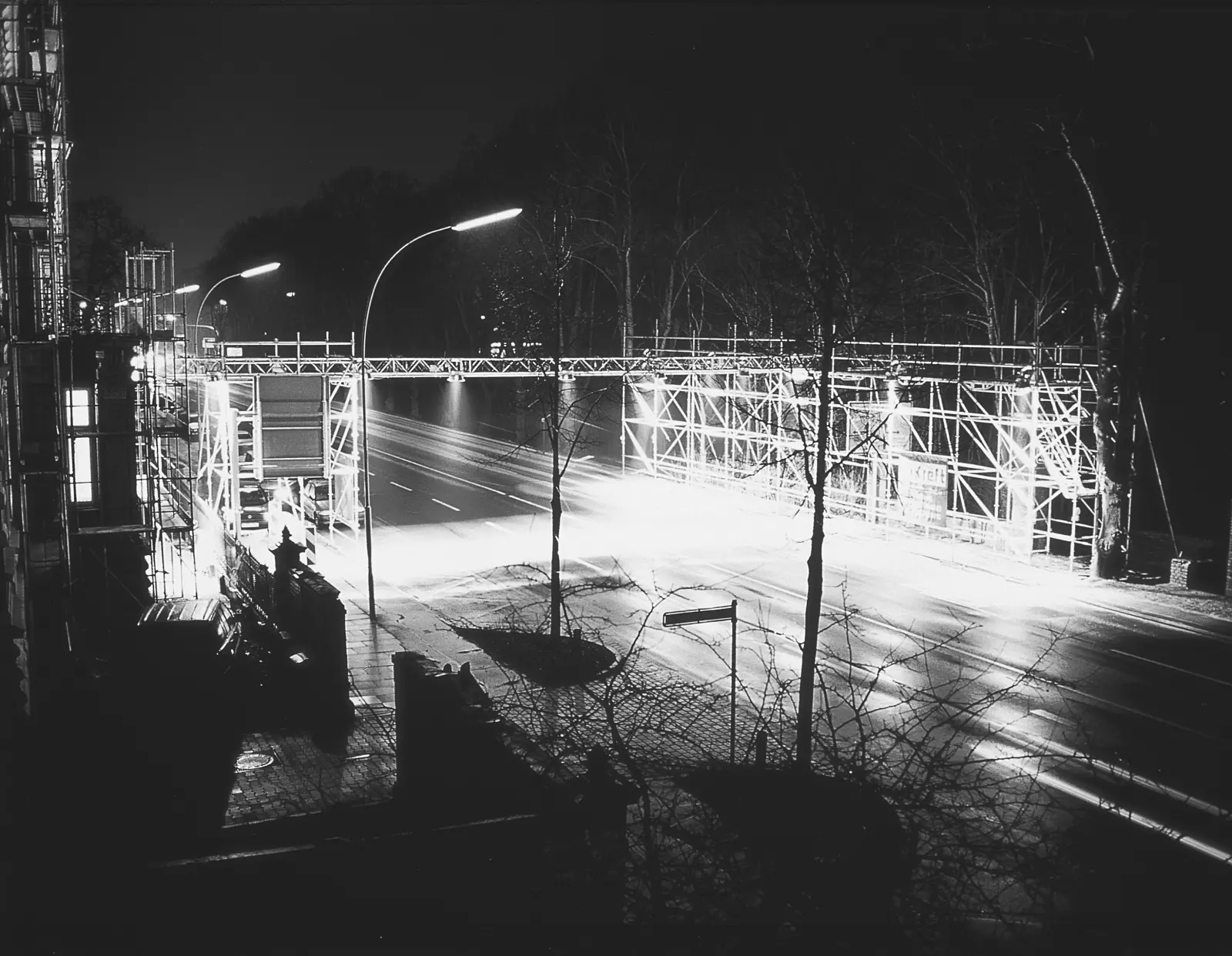
Lüneburg, 2000
„urban context“ public space with students and teaching staff of Lüneburg University
A former Gauleitung bunker runs largely unnoticed under a main road in Lüneburg. The applied cultural studies students’ idea to realize an intervention in the bunker was rejected by the mayor, as he feared negative propaganda for the city. Five years later, after numerous discussions and research into bunker typology and other monuments in Lüneburg in the context of the world war, as an alternative the floor plan of the Gauleitung bunker was traced with light on the street. (JO)

Montevideo, 1999
„greenlight’ rua Democracia“, public space
Green lights marked the abandoned houses (casas abandonadas) in Montevideo in one of the largest construction projects in South America, realized by Argentinean architect Emilio Reus in the 1920s. The goal of the temporary light installation and an extensive archival work was to take on the changing structures of Jewish immigration, giving it visibility in the scope of an artistic research project. Social conflict areas, including fields like drug trade and prostitution, were taken into consideration. (JO)
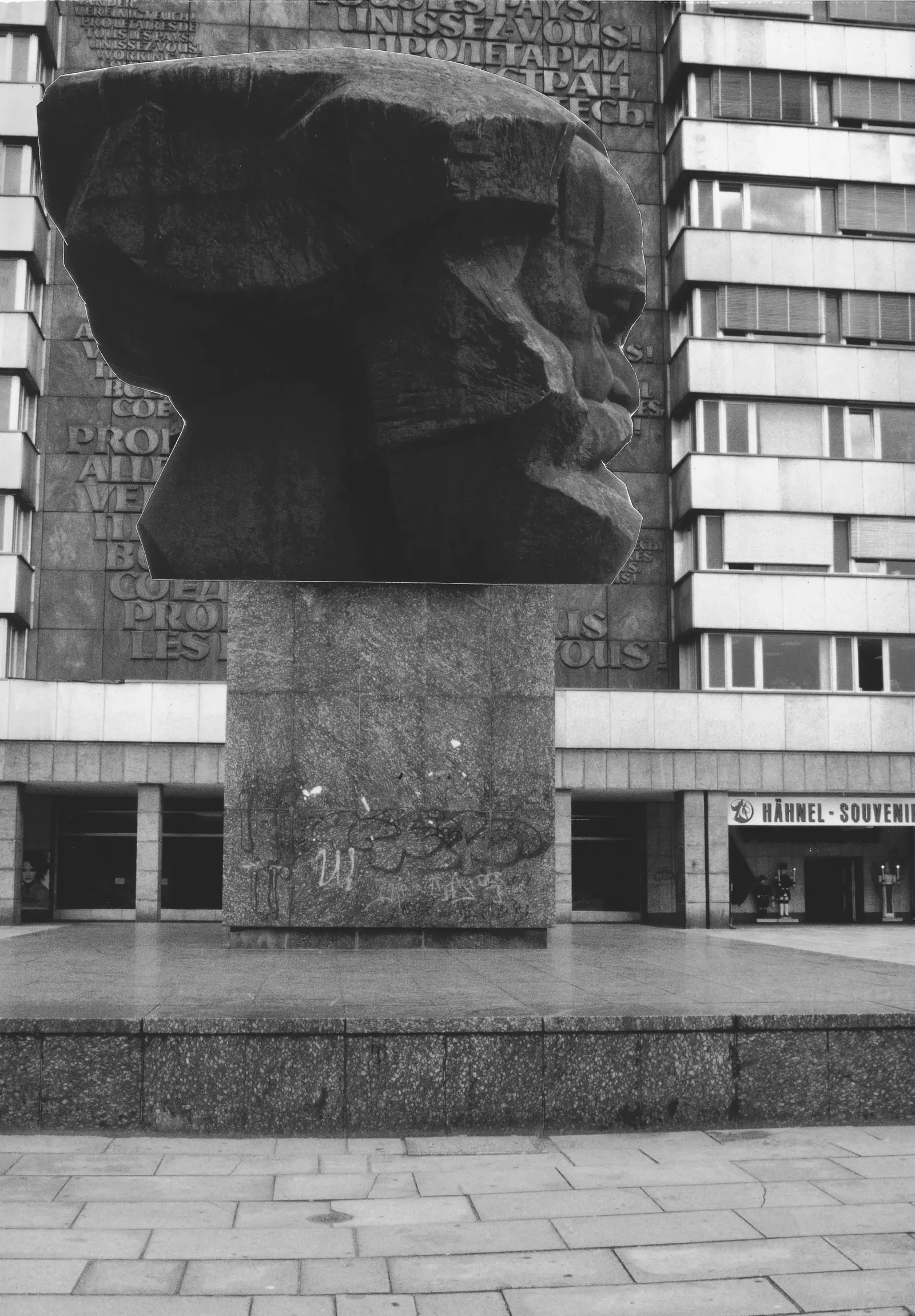
Chemnitz, 1998
„Karl-Marx-Kopf, Ostung“, public space
As the symbol of Karl-Marx-Stadt, today Chemnitz, the monumental bronze sculpture of Karl Marx’s head served as a backdrop for all events on GDR holidays. Standing in front of the former county council and current residential complex in the city center, the second largest portrait bust in the world would be rotated to face east. Thus highlighting anew the formal and political relationship between architecture and monument and to put this theme up for discussion. (JO)
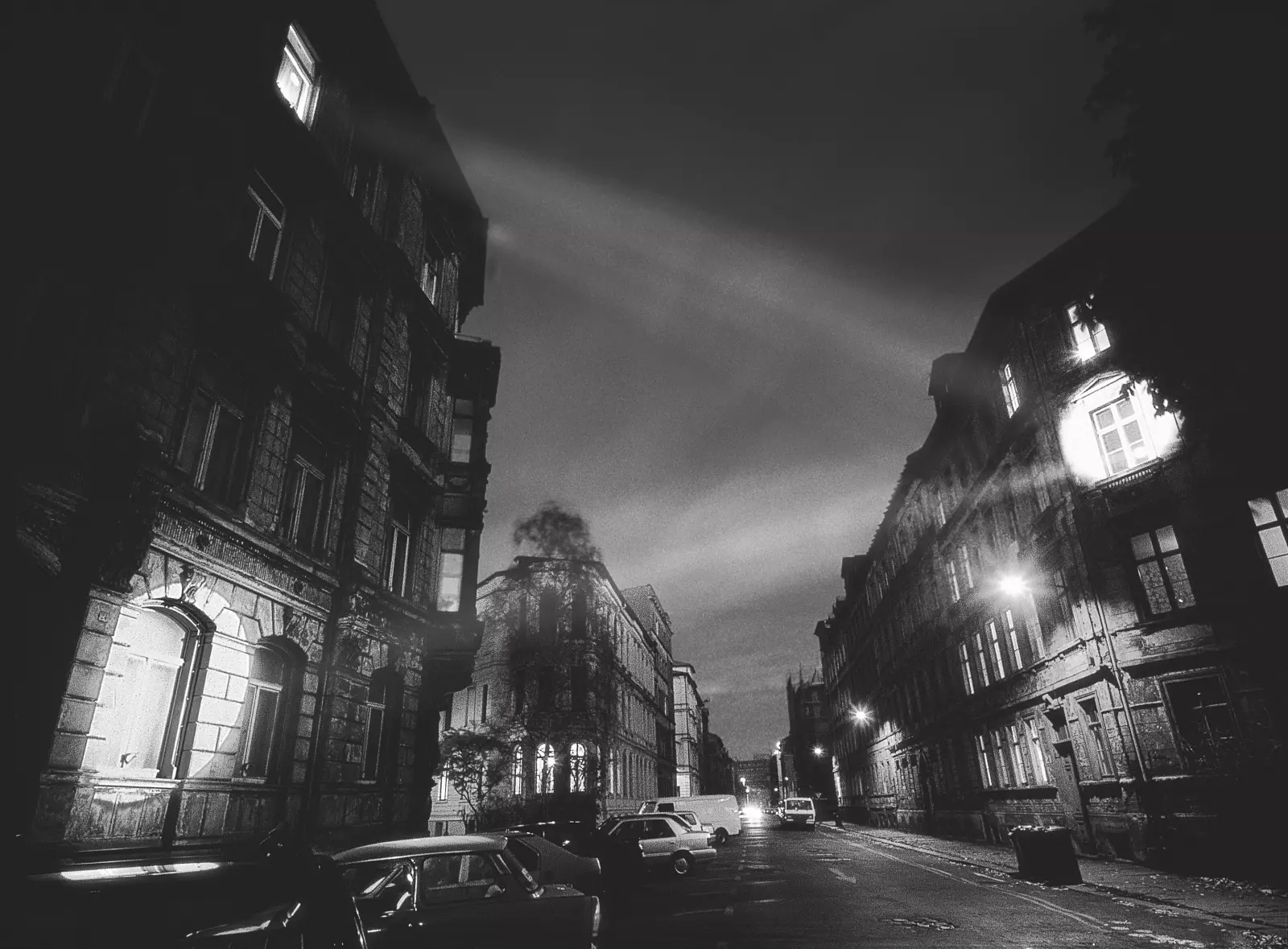
Leipzig, 1994
„Peep-out“, Galerie für Zeitgenössische Kunst, public space
In 1994, the Galerie für Zeitgenössische Kunst initiated a project in 1994 that dealt with questions about the housing vacancy in Leipzig. Shortterm collaborations were to anchor this urban theme conspicuously in urban space. Over the course of the collaboration Kuball discovered another empty home that he directly factored into his concept. Inside of a few weeks the apartment was ultimately rented to students out of fear of possible squatters. (JO)
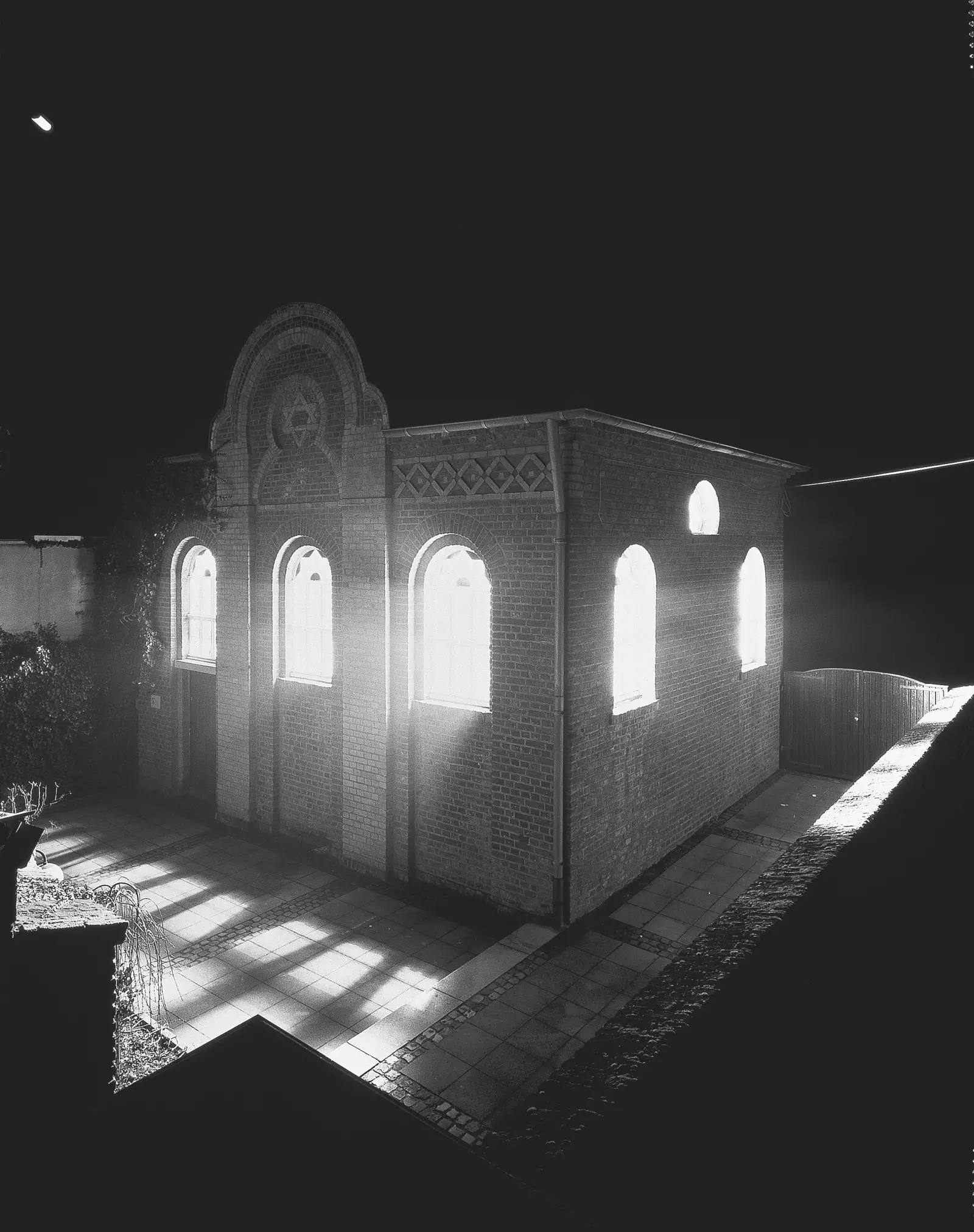
Stommeln, Pulheim, 1994
„refraction house“, Synagogue Stommeln
Each year since 1991 under the title “Project Synagogue Stommeln” an artist is invited to develop a project for the small synagogue which survived the pogroms of 1938. With Kuball’s intervention the synagogue was closed for the first time during the run of the exhibition from February 27 to April 14, 1994, and was made inaccessible to the public. Instead the visitors were dazzled by strong floodlights shining out from inside the synagogue which illuminated the neighboring buildings. (JO)
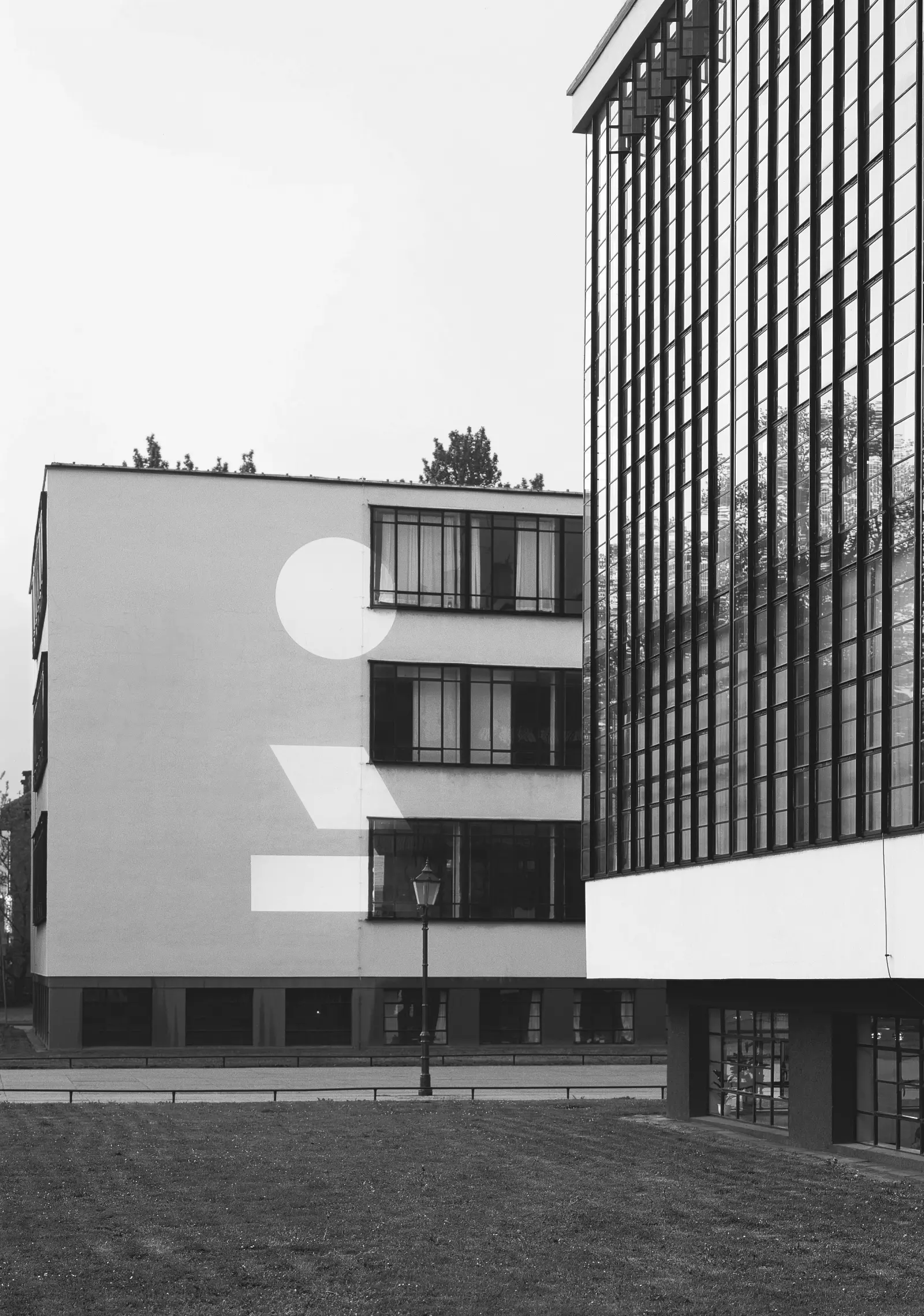
Dessau, 1992
„Lichtbrücke/Bauhaus-Block/Light Bridge“, Bauhaus
After four years of planning Kuball realized a dynamic three-part projection of transparencies of geometric forms in the stairwells, in-between spaces, and on the exterior façade of the Bauhaus in Dessau. The building itself was open 24 hours and made accessible to the public. It was the first public artistic intervention in the Bauhaus after its closure in 1933 by the NSDAP and positioned the institution clearly in its public surroundings. (JO)
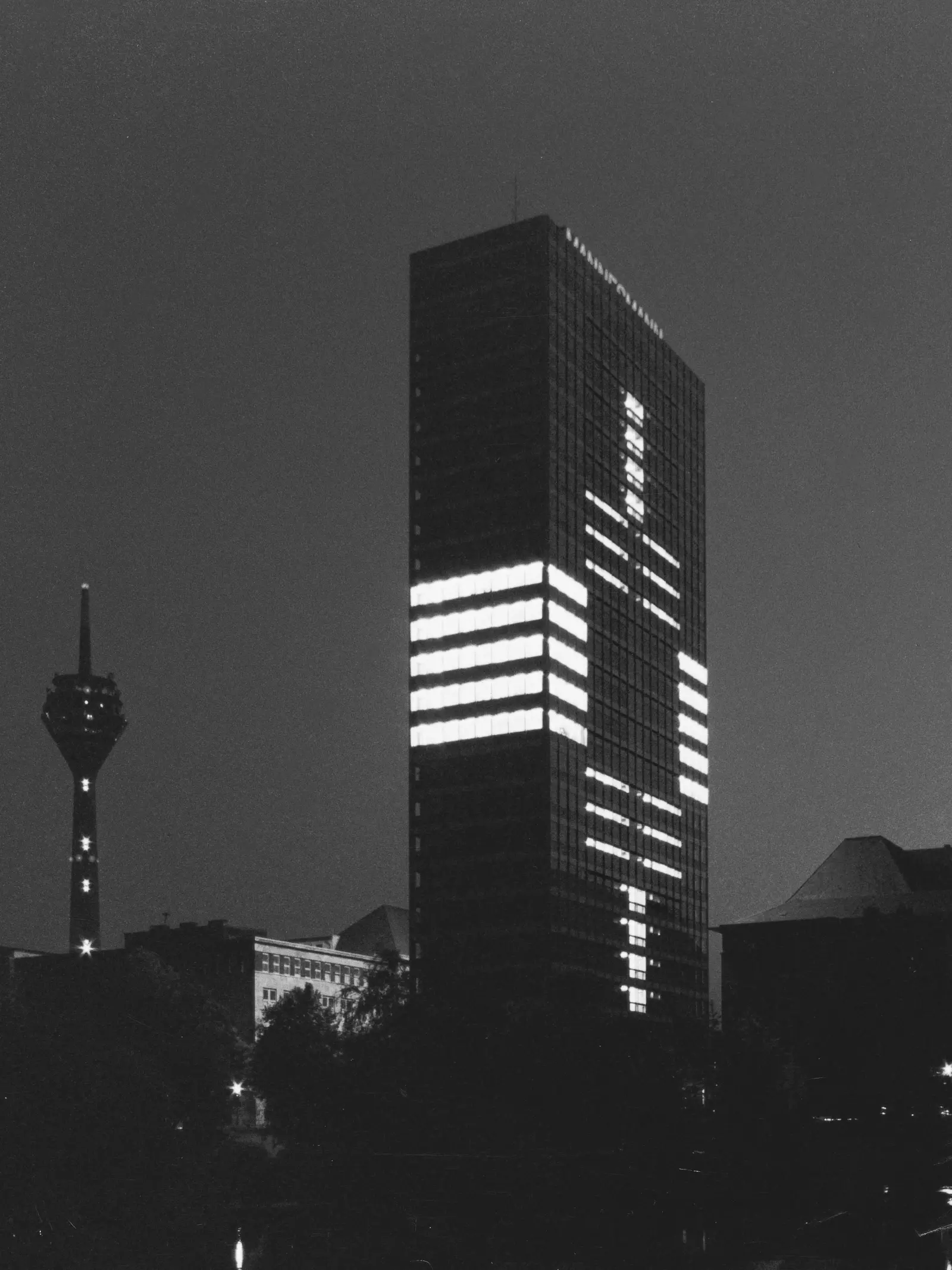
Düseldorf, 1990
„Megazeichen“, Mannesmann high-rise
A trip to New York in 1982 was the catalyst for creating a nocturnal sculpture out of the 23-story Mannesmann administrative high-rise building designed by Paul Schneider from Esleben and erected in Düsseldorf in the 1950s. The almost 700 employees were asked on a particular evening to either leave on or turn off their office light. Through this “orchestration” of existing lights, a total of six configurations resulted between October 3 and November 13, 1990. This project formed the first temporary sculptural intervention in urban space by the artist. (JO)
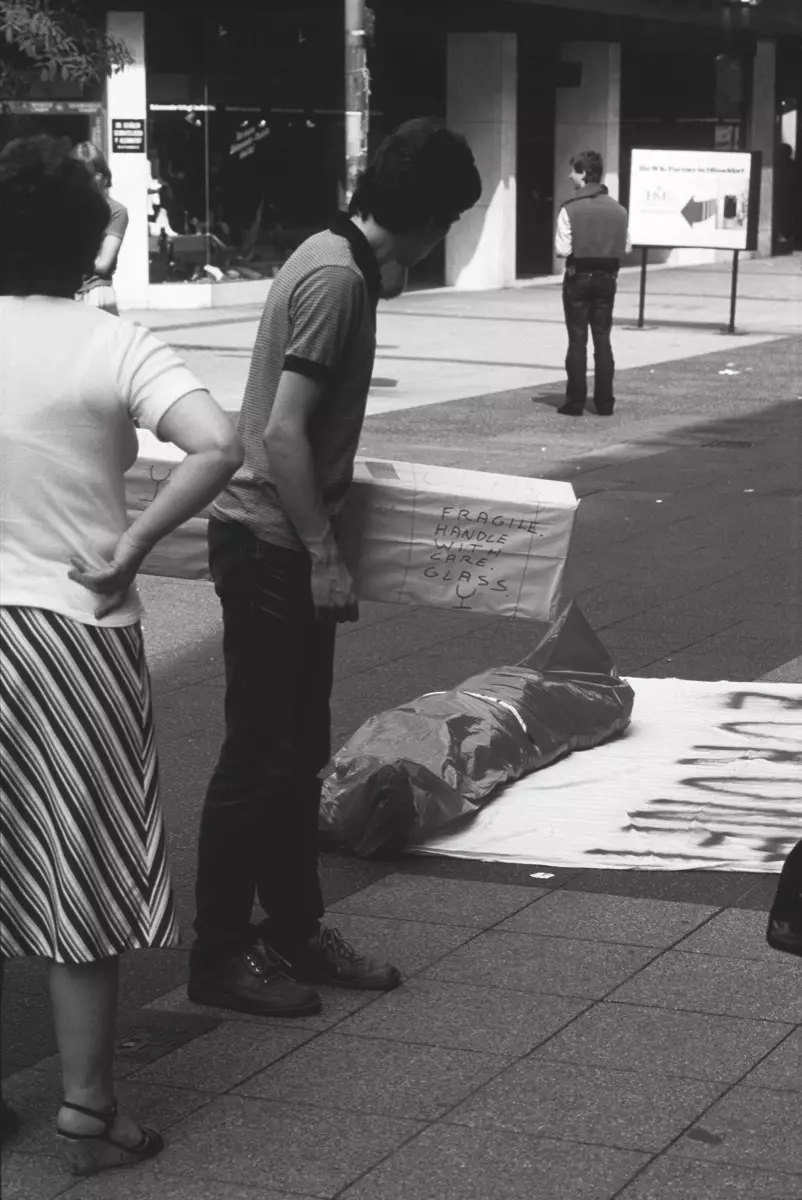
Düsseldorf, 1977
„no future“, public space
With the song “Into the Light” by Peter Gabriel as a starting point, Kuball’s first public performance came about rather spontaneously in a pedestrian zone in Düsseldorf, and was documented through just a few photographs. Inside of a hazardous waste bag he moved from a parking lot towards the busy shopping area. There he lay for about two hours on a graffitied bedsheet while passersby kicked the motionless bag in disbelief. (JO)